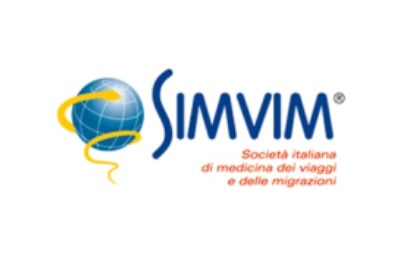Influenza (Flu)
Influenza is a highly contagious airborne viral infection that affects both humans and certain animal species.
Influenza viruses are extremely antigenically diverse. These two characteristics make influenza a disease that cannot be eradicated. Epidemiologically, influenza is characterised by a seasonal epidemic pattern (epidemics occur in the cold season) and morè rarely pandemic. Pandemics occur when a completely new virus appears on the epidemiological landscape, which is the result of a genetic reassortment of human and animal viruses.
Influenza predominantly affects children, while complications mainly occur in the elderly and people at higher risk.
CAUSES
The influenza virus belongs to the class of Orthomyxoviridae viruses. It is a lipid-enveloped, pleiomorphic (able to change its morphology) virus with a helical nucleocapsid surrounded by peplomers. The outer envelope contains the surface antigens: neuraminidase (NA or N) and hemagglutinin (HA or H).
Based on the antigenic characteristics of the internal proteins, matrix protein and nucleoprotein, influenza viruses can be classified into 4 different genera:
- Type A and type B, which cause seasonal flu epidemics
- Type C, which is rarer, and usually causes an asymptomatic or cold-like infection of scarce epidemiological significance to humans
- Type D, a new type of virus recently identified and isolated in pigs and cattle. Its ability to infect humans is still unknown.
Influenza viruses show a marked genetic variabilitỳ, with the ability to mutate the characteristics of HA and NA surface proteins. Based on these mutations, viruses are classified into different subtypes, each distinguished by a numerically suffix that is progressively assigned to each type.
Type A influenza viruses have a greater ability to mutate. Variations are mainly due to spontaneous mutations (minor mutations or antigenic drift) of the HA and NA antigens, which cause seasonal outbreaks and involve both type A and type B viruses. In the case of reassortment between human and animal viruses, a complete substitution of the HA and NA antigens (major mutation or antigenic shift) can occur, resulting in the appearance of a completely new viral strain compared to the ones previously in circulation, which can lead to an influenza pandemic. This type of mutation only occurs in type A influenza.
It is precisely because of this characteristic that we cannot acquire permanent immunity against influenza viruses and why people can catch influenza several times in a lifetime. This is why the vaccine needs to be reformulated every year, using the most likely circulating strains, and administered annually before the winter season begins.
TRANSMISSION
Seasonal influenza is spread between humans via respiratory secretions or saliva, but also through contact with contaminated hands. An infected person is able to pass the virus to others just a little before the first symptoms appear and can continue to do so for 5-7 days.
GEOGRAPHICAL DISTRIBUTION
The influenza virus is common throughout the world.
According to World Health Organization (WHO) estimates, seasonal influenza epidemics, which occur annually during the winter season in temperate climate regions, affect 5 to 15 percent of the world's population, i.e. 350 million to 1 billion people. 3 to 5 million serious cases require hospitalisation in high risk groups (e.g., the elderly, people with chronic diseases). The impact of seasonal influenza in terms of mortalitỳ rates is 250-500,000 deaths per year, approximately 10% of serious cases.
The European Centre for Disease Prevention and Control (ECDC) estimates that seasonal influenza is responsible for up to 50 million symptomatic cases in the European Union/European Economic Area (EU/EEA), and 15 000–70 000 European citizens die of causes associated with influenza.
SYMPTOMS
Influenza is an acute respiratory illness with a sudden onset of fever (usually over 38 °C), accompanied by generalised symptoms of malaise, headache, asthenia, myalgia, sweating, chills, and respiratory symptoms such as cough and nasal congestion. Gastrointestinal symptoms (nausea, vomiting, diarrhoea) may also occur, particularly in children.
The incubation period is 1-4 days (average 2 days) and the disease usually lasts about 1-2 weeks and resolves on recovery.
In some cases, complications may occur: bacterial superinfections of the respiratory system (primary and secondary pneumonia) and ear (otitis, sinusitis, especially in children), complications of the cardiovascular system (myocarditis), and nervous system, as well as aggravation of pre-existing diseases.
DIAGNOSIS
The diagnosis of influenza is mostly based on clinical features. Laboratory tests on secretions from the respiratory tract or nasal cavities can identify the viral genome or antigens. Rapid tests are also available but they are not very accurate. However, routine use of diagnostic tests is not recommended as they have scarce repercussions on clinical practice.
TREATMENT
Treatment is focused on relieving symptoms. Antipyretic and anti-inflammatory drugs should be used to control fever and relieve patient discomfort. Given the significant reliance on self-prescription, citizens need to be informed about the symptomatic nature of these therapies.
Paracetamol, ibuprofen, and diclofenac are drugs that can be used in adults and also have the advantage of good efficacy and low gastrolesivity. The use of acetaminophen is recommended in individuals at increased cardiovascular risk. For individuals alreadỳ on low-dose aspirin therapy, increasing the dose of acetylsalicylic acid to the required minimum dose needed to create an antipyretic and analgesic effect is also an alternative. However, acetylsalicylic acid is not indicated for children and young people under 18 years of age due to the risk of Reye's syndrome.
Antibiotic use is not recommended in influenza patients without complications or sore throat associated with flu syndrome, unless it is proven to be caused by bacterial superinfection.
PREVENTION
The influenza vaccine is the best preventive strategy to reduce the epidemiological, clinical, and economic impact of influenza. Among the applicable strategies, the most common is the protection of at-risk groups, particularly the elderly population. Despite ample evidence of safety and efficacy, and the fact that the elderly are most at risk of developing post-influenza complications, flu vaccine coverage does not reach the minimum recommended values.
Bibliography & Sitography
Bartolozzi G. Vaccini e Vaccinazioni, Seconda Edizione. Masson 2005.
Rugarli C., Obiass M., Medicina interna Sistematica, Quinta Edizione. Masson 2015; 1585-1586
De Grazia S., Ferrero D., Giammanco G. Microbiologia e Microbiologia Clinica per infermieri, 2012.
La sorveglianza Passi d’Argento. Vaccinazione antinfluenzale, portatori di una malattia cronica.
epicentro.iss.it/passi-argento/dati/ VaccinazioneAntinfluenzale.asp
Ministero della Salute. FAQ - Influenza e vaccinazione antinfluenzale.
salute.gov.it/portale/p5_1_1.jsp?lingua=italiano&id=103
Enciclopedia Treccani: www.treccani.it
Epicentro, il portale dell’epidemiologia per la sanità pubblica: www.epicentro.iss.it
Istituto Superiore di Sanità: www.iss.it
Ministero della Salute: www.salute.gov.it
VaccinarSi, informazioni sulle vaccinazioni. Portale di informazione medica scientifica sulle vaccinazioni a cura della SITI (Società Italiana di Igiene): www.vaccinarsi.org
CDC Centers for Disease Center: https://www.cdc.gov





